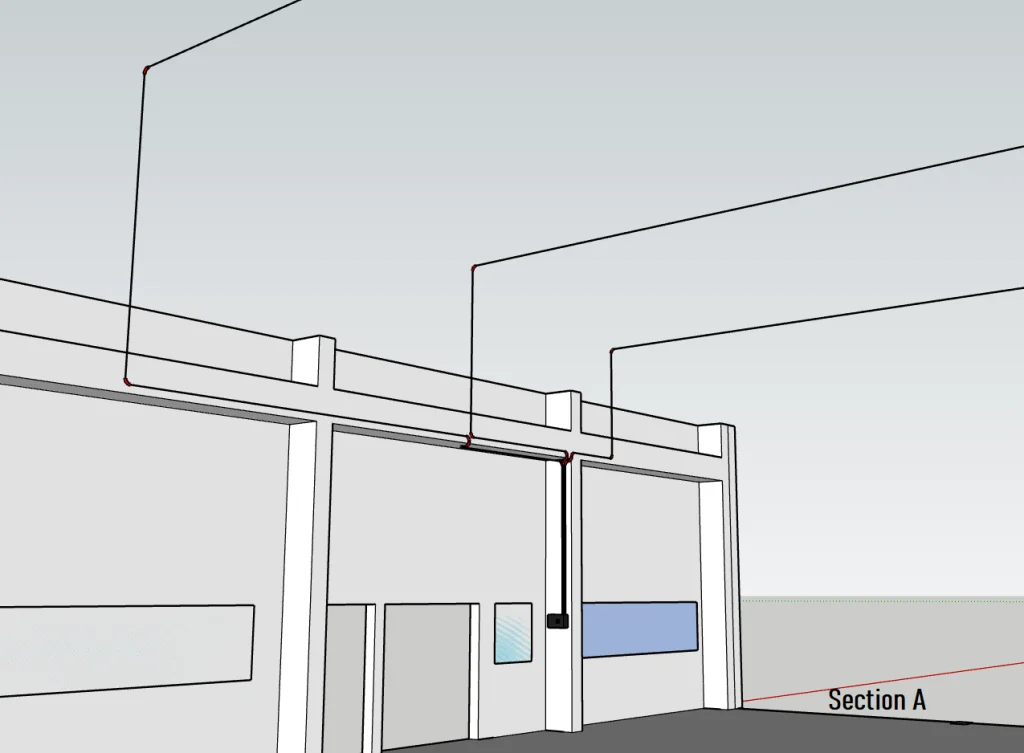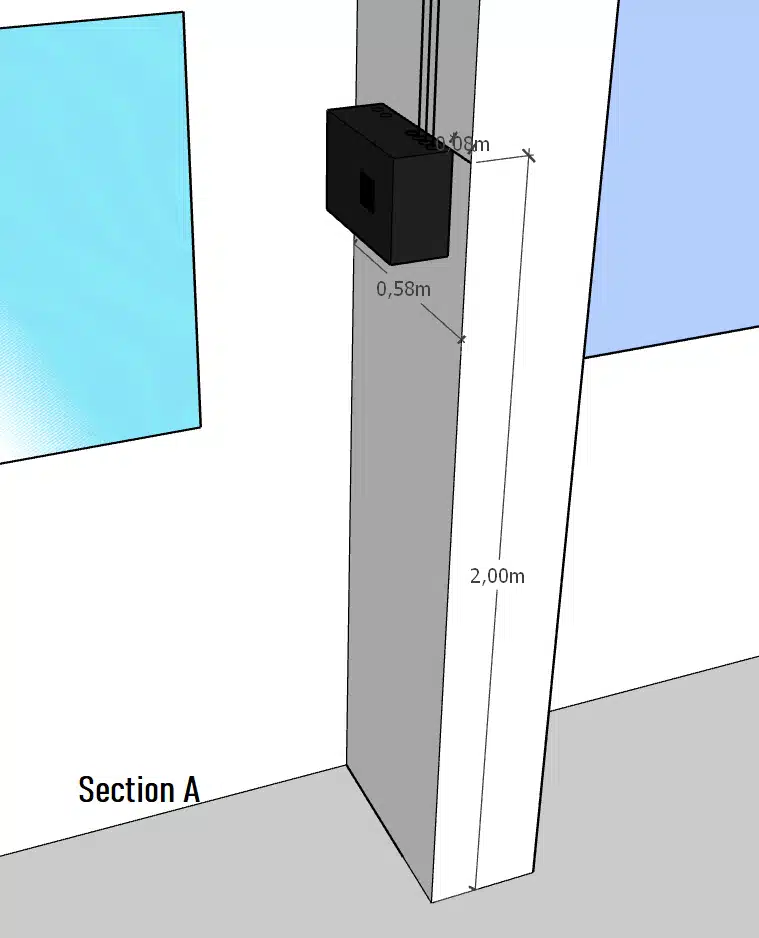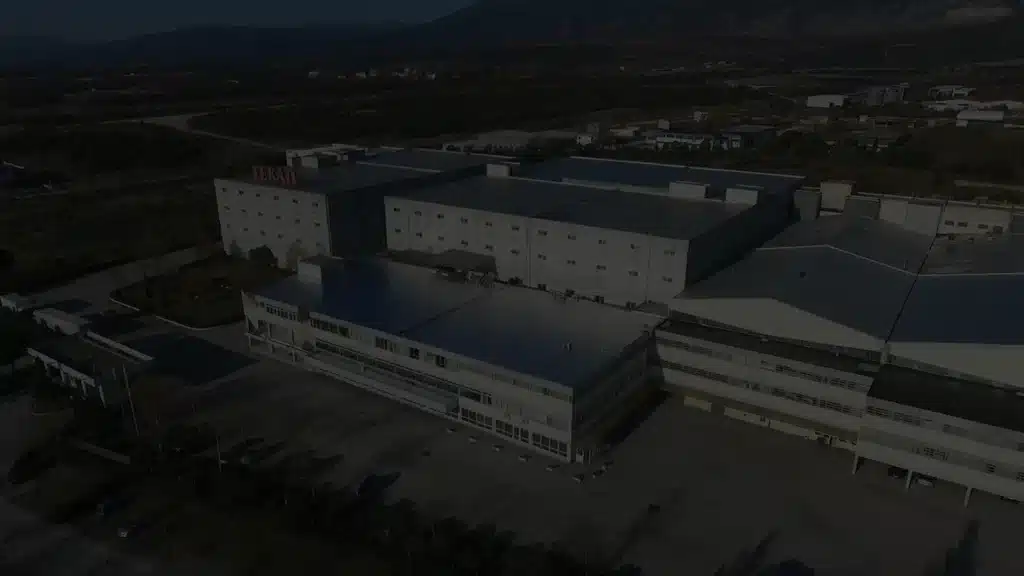Overview:
Client
JT International Hellas A.E.B.E.
Website
https://www.jti.com/
Year of Assignment
2019
Location
Xanthi
Area
56,000 m²
Type of Main Detection
Smoke
System Selection
Detection with spot detectors, beams, and aspirating detection
Budget of the Study
7.427,60€
Project budget
300.000€
Implementation time
2 months
The tobacco industry ΣΕΚΑΠ(Greek Cooperative of Tobacco Producers), founded in 1975 in the region of Thrace, was acquired by JTI in 2018 and has re-entered a developmental trajectory with high aspirations. Within two years, investments were made to develop the facilities and modernize the mechanical equipment.
Since its acquisition, ΣΕΚΑΠ has multiplied its production capacity and increased exports to major European markets.
Installation and Operation of an Automatic Fire Detection System
The facilities of ΣΕΚΑΠ consist of building complexes with a total area of 56,000 m², which house production areas, product storage, offices, and infrastructure spaces.
The objective of the study was to install and operate an automatic fire detection system and manual fire alarm station in the tobacco factory, aiming for early fire detection, preventing material damage through the immediate activation of suppression systems, and ensuring timely alerts for people to evacuate the building.
Addressable Fire Detection System
An addressable fire detection system was selected for installation, according to the ΕΛΟΤ ΕΝ54 standard, given its flexibility in connecting devices and its ability to easily identify the starting point of an alarm in the event of an incident, allowing for immediate intervention to suppress the fire within the first few minutes.
It is also significant that the loops used in these systems allow for the connection of multiple of many and different fire detection devices (up to approximately 250 devices), such as spot detectors, sirens, beacons, buttons, etc., without separation.
Additionally, there is the possibility of visualizing the facilities and devices of the entire system. Addressable fire detection systems require less maintenance time and operational checks compared to conventional systems. The use of loops and the connection of both ends to the fire alarm control panel allow for the removal or deactivation of one device without affecting the other devices in the loop. Even in the case of one end being damaged, signal reception from the other end will continue.
Main Parts of the Fire Detection System
Regarding the fire detection devices, beam detectors and multi-sensor smoke detectors were installed in the majority of the building infrastructure, while the intermediate side areas of staircases and corridors are also covered by the installation of multi-sensor smoke detectors in each staircase and on each floor.
In the production areas of ΣΕΚΑΠ, the air sampling system "Aspiration" was chosen. To control the 5 buildings, 2 central fire alarm panels and 1 repeater panel were installed. Computer units were placed from which the facility spaces are graphically represented in floor plans with clearly identifiable markings of the addressable detection system, allowing for real-time monitoring of the system. Additionally, the fire alarm system monitors self-closing doors, manual alarm buttons, and internal or external type beacons.
| KEY PARTS OF THE FIRE DETECTION SYSTEM | |
|---|---|
| 1. Addressable control and input/output command units | 4. Addressable beam detectors |
| 2. Two main and one repeater fire detection panels | 5. "Aspiration" air sampling system |
| 3. Internal and external alarm beacons | 6. Wiring |
Addressable multi-sensor smoke and temperature detectors
Multi-sensors are point detectors designed to detect the early stages of fire development. For this purpose, they are equipped with a photoelectric visible smoke sensor and a percentage temperature rise sensor. They can function as smoke detectors, temperature detectors, or both.
When smoke is detected, the multi-sensor issues an alarm signal. These detectors are commonly used in residences, offices, commercial buildings, and other small to medium spaces where smoke detection at specific points is necessary.
Addressable Beam Detectors
Beam detectors are used for fire detection in large spaces, such as concert halls, warehouses, airports, and other large buildings. They function by sending a trigger (light beam or ultrasonic beam) from a transmitter to a receiver located on the opposite side of the space. If smoke or fire particles obstruct the beam, the reduction in light intensity or change in reflectivity is detected as a fire indication. In such cases, an alarm signal is issued. Beam detectors are widely used because of their ability to cover large spaces with relatively few detectors.
The Selection of the "Aspiration" Air Sampling System in the Main Production Areas
The key differentiation in this study lies in the "Aspiration" air sampling system used in the building housing the tobacco factory's production. This system is one of the most advanced solutions for spaces requiring a high level of protection. The main reason for selecting this system was the conditions in the production area, specifically the absence of dust and smoke. Additionally, the building's structure made the "Aspiration" system the optimal choice.
Key Features and Advantages of the "Aspiration" System
The "Aspiration" fire detection system is designed to detect smoke before the fire becomes widespread. Air sampling is based on the principle of air suction through a network of pipes from the protected area, leading to an extremely sensitive detection-evaluation unit. This detector continuously samples the air to check for the presence of smoke particles.
At the same time, the sensor is not prone to false alarms caused by contamination in the area from other sources (e.g., dust presence).


The system’s sensitivity is based on cumulative smoke detection from all the sampling points, unlike traditional smoke detectors, which operate independently. The sensitivity of the unit is adjustable and has multiple alarm levels, which can trigger different actions depending on the space and the severity of the incident. Another advantage is the installation flexibility, which broadens the range of applications for this solution. Lastly, these systems can integrate with other fire detection systems, allowing users to monitor the system remotely.
The sensitivity of the unit is adjustable and has multiple alarm levels, which can perform different actions depending on the area and the severity of the event. Another advantage of the system is its installation flexibility, which also expands the range of applications for this particular solution. Finally, these systems have the capability to collaborate and integrate with other fire detection systems, while allowing users to monitor the system remotely.
Project team
Tobacco Industry ΣΕΚΑΠ: Fire Detection Study
ΙΩΝΙΚΗ Engineering
Overview:
Client
JT International Hellas A.E.B.E.
Website
https://www.jti.com/
Year of Assignment
2019
Location
Xanthi
Area
56,000 m²
Type of Main Detection
Smoke
System Selection
Detection with spot detectors, beams, and aspirating detection
Budget of the Study
7.427,60€
Project budget
300.000€
Implementation time
2 months
The tobacco industry ΣΕΚΑΠ(Greek Cooperative of Tobacco Producers), founded in 1975 in the region of Thrace, was acquired by JTI in 2018 and has re-entered a developmental trajectory with high aspirations. Within two years, investments were made to develop the facilities and modernize the mechanical equipment.
Since its acquisition, ΣΕΚΑΠ has multiplied its production capacity and increased exports to major European markets.
Installation and Operation of an Automatic Fire Detection System
The facilities of ΣΕΚΑΠ consist of building complexes with a total area of 56,000 m², which house production areas, product storage, offices, and infrastructure spaces.
The objective of the study was to install and operate an automatic fire detection system and manual fire alarm station in the tobacco factory, aiming for early fire detection, preventing material damage through the immediate activation of suppression systems, and ensuring timely alerts for people to evacuate the building.
Addressable Fire Detection System
An addressable fire detection system was selected for installation, according to the ΕΛΟΤ ΕΝ54 standard, given its flexibility in connecting devices and its ability to easily identify the starting point of an alarm in the event of an incident, allowing for immediate intervention to suppress the fire within the first few minutes.
It is also significant that the loops used in these systems allow for the connection of multiple of many and different fire detection devices (up to approximately 250 devices), such as spot detectors, sirens, beacons, buttons, etc., without separation.

Additionally, there is the possibility of visualizing the facilities and devices of the entire system. Addressable fire detection systems require less maintenance time and operational checks compared to conventional systems. The use of loops and the connection of both ends to the fire alarm control panel allow for the removal or deactivation of one device without affecting the other devices in the loop. Even in the case of one end being damaged, signal reception from the other end will continue.

Main Parts of the Fire Detection System
Regarding the fire detection devices, beam detectors and multi-sensor smoke detectors were installed in the majority of the building infrastructure, while the intermediate side areas of staircases and corridors are also covered by the installation of multi-sensor smoke detectors in each staircase and on each floor.
In the production areas of ΣΕΚΑΠ, the air sampling system "Aspiration" was chosen. To control the 5 buildings, 2 central fire alarm panels and 1 repeater panel were installed. Computer units were placed from which the facility spaces are graphically represented in floor plans with clearly identifiable markings of the addressable detection system, allowing for real-time monitoring of the system. Additionally, the fire alarm system monitors self-closing doors, manual alarm buttons, and internal or external type beacons.
| KEY PARTS OF THE FIRE DETECTION SYSTEM | |
|---|---|
| 1. Addressable control and input/output command units | 4. Addressable beam detectors |
| 2. Two main and one repeater fire detection panels | 5. "Aspiration" air sampling system |
| 3. Internal and external alarm beacons | 6. Wiring |
Addressable multi-sensor smoke and temperature detectors
Multi-sensors are point detectors designed to detect the early stages of fire development. For this purpose, they are equipped with a photoelectric visible smoke sensor and a percentage temperature rise sensor. They can function as smoke detectors, temperature detectors, or both.
When smoke is detected, the multi-sensor issues an alarm signal. These detectors are commonly used in residences, offices, commercial buildings, and other small to medium spaces where smoke detection at specific points is necessary.
Addressable Beam Detectors
Beam detectors are used for fire detection in large spaces, such as concert halls, warehouses, airports, and other large buildings. They function by sending a trigger (light beam or ultrasonic beam) from a transmitter to a receiver located on the opposite side of the space. If smoke or fire particles obstruct the beam, the reduction in light intensity or change in reflectivity is detected as a fire indication. In such cases, an alarm signal is issued. Beam detectors are widely used because of their ability to cover large spaces with relatively few detectors.

The choice of the sampling system air "Aspiration" in the main areas of production
The key differentiation in this study lies in the "Aspiration" air sampling system used in the building housing the tobacco factory's production. This system is one of the most advanced solutions for spaces requiring a high level of protection. The main reason for selecting this system was the conditions in the production area, specifically the absence of dust and smoke. Additionally, the building's structure made the "Aspiration" system the optimal choice.
Key Features and Advantages of the "Aspiration" System
The "Aspiration" fire detection system is designed to detect smoke before the fire becomes widespread. Air sampling is based on the principle of air suction through a network of pipes from the protected area, leading to an extremely sensitive detection-evaluation unit. This detector continuously samples the air to check for the presence of smoke particles.

At the same time, the sensor is not prone to false alarms caused by contamination in the area from other sources (e.g., dust presence).

The system’s sensitivity is based on cumulative smoke detection from all the sampling points, unlike traditional smoke detectors, which operate independently. The sensitivity of the unit is adjustable and has multiple alarm levels, which can trigger different actions depending on the space and the severity of the incident. Another advantage is the installation flexibility, which broadens the range of applications for this solution. Lastly, these systems can integrate with other fire detection systems, allowing users to monitor the system remotely.
The sensitivity of the unit is adjustable and has multiple alarm levels, which can perform different actions depending on the area and the severity of the event. Another advantage of the system is its installation flexibility, which also expands the range of applications for this particular solution. Finally, these systems have the capability to collaborate and integrate with other fire detection systems, while allowing users to monitor the system remotely.
Project team
PhD, MBA, Electrical Engineer
AutoCAD designer






